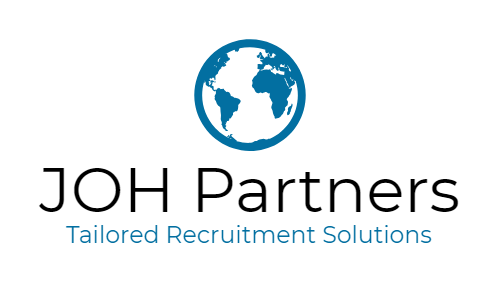In this article, we will explore some considered responses to the common interview question “where do I see myself in three years.” By preparing thoughtful and strategic answers, you can set yourself up for success in your career evolution.
Key Takeaways
- Preparing for the “where do I see myself in three years” question can significantly impact your interview success.
- Creating realistic and achievable career goals for the next three years showcases a proactive attitude towards professional growth.
- Demonstrating a commitment to personal development and continuous learning helps employers see your potential.
- College students and recent graduates can leverage their academic achievements and future ambitions to craft compelling responses.
- Existing employees should highlight their aspirations for advancement within the company to showcase loyalty and dedication.
Understanding the Question: Where Do I See Myself in Three Years?
Before diving into potential answers, it’s essential to have a clear understanding of what the interviewer is seeking when they ask, “where do I see myself in three years?” This question is designed to evaluate your long-term goals, ambition, and compatibility with the company’s vision. By comprehending the purpose behind the question, you can craft a well-rounded response that demonstrates your commitment to personal and professional growth.
The interviewer wants to assess your ability to set goals, plan for the future, and align your aspirations with the organization’s objectives. They are interested in your level of self-awareness and whether you possess the drive and motivation necessary to succeed. It’s crucial to convey your enthusiasm and dedication to your career path during the interview.
One way to approach this question is to reflect on your current career trajectory and identify where you would like to be three years from now. Consider the skills and experiences you aim to acquire, the level of responsibility you aspire to, and the impact you hope to make within the organization. Your response should showcase your ambition and show that you have a strategic mindset for personal and professional development.
Interviewer: “Where do you see yourself in three years?”
You: “In the next three years, I envision myself taking on leadership roles within the company while continuing to expand my skillset and knowledge in the industry. I am passionate about driving innovative solutions and leading high-performing teams, and I believe that by embracing continuous learning and seizing opportunities for growth, I can contribute significantly to the company’s success.”
By emphasizing your commitment to ongoing learning, adaptability, and aligning your goals with the company’s vision, you can address the question confidently and provide a compelling response that sets you apart from other candidates.
Setting Career Goals for the Next Three Years
When addressing the question “where do I see myself in three years?” during an interview, discussing your career goals for the next three years is an effective approach. By outlining your aspirations and explaining how they align with your professional development, you can demonstrate your ambition and commitment to growth.
To set career goals that are both realistic and achievable, it is crucial to follow strategies that allow for continuous progression. Consider the following steps:
- Evaluate your current position: Reflect on your current role, skills, and achievements. Identify areas for improvement and growth. This self-assessment will provide a clear starting point for setting goals.
- Define your long-term vision: Envision where you want to be in your career in the next three years. Think about your desired job title, responsibilities, and the industry you want to be working in. This will help you identify the skills and experiences you need to acquire to reach your goals.
- Break down your goals into smaller milestones: Once you have defined your long-term vision, break it down into short-term goals that you can focus on achieving within specific timeframes. These smaller goals will provide a roadmap for your professional development.
- Create an action plan: Develop a detailed plan of action for each goal you have identified. Outline the steps you need to take, such as acquiring new skills, seeking mentorship, or pursuing additional education or certifications.
- Track your progress: Regularly review and assess your progress towards your goals. Celebrate achievements and make adjustments as necessary. This will help you stay motivated and ensure that you are on track towards your long-term vision.
By following these strategies, you can set yourself up for success in achieving your career goals over the next three years. Remember to be specific, realistic, and adaptable as you navigate your professional journey.
Example:
“In the next three years, my main career goal is to move into a leadership position within the marketing department of a global technology company. I aim to develop my strategic thinking abilities, enhance my project management skills, and deepen my knowledge of digital marketing trends. To achieve this, I plan to pursue additional professional certifications, attend industry conferences, and seek mentorship from senior marketing professionals. By regularly tracking my progress and staying abreast of industry developments, I am confident that I will be well-positioned to take on a leadership role within the next three years.”
| Goal | Action Steps | Timeline |
|---|---|---|
| Develop strategic thinking abilities | Enroll in a strategic management course; Seek mentorship from a strategic planning expert | Complete course within the next six months; Establish ongoing mentorship |
| Enhance project management skills | Obtain Project Management Professional (PMP) certification; Volunteer for cross-functional project teams | Pass PMP exam within the next year; Engage in cross-functional projects on an ongoing basis |
| Deepen knowledge of digital marketing trends | Attend industry conferences and seminars; Join digital marketing communities and participate in online courses | Attend at least two conferences per year; Engage in continuous learning through online courses and communities |
Setting clear career goals and mapping out actionable steps to achieve them creates a sense of direction and purpose. It displays your proactive approach to personal and professional growth, setting you apart from other candidates.
Personal Development: Learning and Growth in Three Years
Employers value candidates who demonstrate a commitment to personal development and continuous learning. In today’s rapidly evolving professional landscape, the ability to adapt and acquire new skills is crucial for long-term success.
If you want to impress employers with your dedication to learning and growth, there are several strategies you can employ.
Foster a Growth Mindset
A growth mindset is the belief that our abilities can be developed through dedication, effort, and perseverance. By embracing a growth mindset, you open yourself up to new challenges and opportunities for learning.
When discussing your plans for personal development in the next three years, highlight your willingness to step outside of your comfort zone and take on new responsibilities. This demonstrates your commitment to growth and your belief in your ability to learn and adapt.
Continuing Education
Continuing education is a valuable avenue for personal development. Consider enrolling in relevant courses, workshops, or seminars to enhance your knowledge in areas that align with your career goals.
When discussing your plans for personal development, mention specific courses or certifications you intend to pursue. This not only shows initiative but also highlights your dedication to staying abreast of industry trends and advancements.
Seek Mentors and Role Models
Mentors and role models can provide invaluable guidance and support as you navigate your professional journey. Look for individuals who have achieved success in your field of interest and learn from their experiences.
When discussing your personal development plans, mention your intention to seek out mentors or role models who can provide guidance and inspire your growth. Employers appreciate candidates who actively seek opportunities for mentorship and networking.
Expand Your Skillset
Identify areas where you can develop new skills that are relevant to your career goals. This could involve acquiring technical skills, improving communication abilities, or developing leadership qualities.
When discussing your plans for personal growth, mention specific skills you intend to develop and how they will contribute to your professional advancement. This demonstrates your proactive approach to personal development and your commitment to self-improvement.
Employers value candidates who demonstrate a commitment to personal development and continuous learning.
By emphasizing your interest in personal development and outlining your plans for learning and growth over the next three years, you can showcase your dedication to professional growth and position yourself as an asset to any organization.
Navigating Career Paths: From College to Professional Life
If you are a college student or recent graduate, navigating your career path can be both exciting and challenging. Transitioning from the structured environment of college to the dynamic world of professional life requires careful planning and strategic thinking. As you contemplate your future, it’s essential to consider how to blend your academic achievements with your ambitions for the next three years.
When answering the question “where do I see myself in three years?” during an interview or career planning session, highlight your ability to leverage your college experience to make a meaningful impact in your chosen field. Emphasize how the knowledge, skills, and networks you acquired through your college education will contribute to your professional growth.
To effectively navigate your career path, consider the following strategies:
- 1. Explore internships: Take advantage of internships to gain practical experience in your field of interest. This hands-on experience will not only enrich your resume but also allow you to apply theoretical knowledge to real-world situations.
- 2. Build a professional network: Connect with professionals in your industry through networking events, career fairs, and online platforms like LinkedIn. Cultivating relationships with mentors and industry professionals can provide valuable guidance and open doors to new opportunities.
- 3. Seek mentorship: Find a mentor who can offer advice and support as you navigate your career path. A mentor can provide valuable insights, help you set goals, and offer guidance based on their own professional experiences.
Remember to stay adaptable and open to new possibilities as you embark on your professional journey. Industries and job markets evolve, requiring individuals to embrace lifelong learning and adapt to changing trends. Keep abreast of industry developments, seek continuous learning opportunities, and be willing to explore different career paths.
Blending your college education with your aspirations for the next three years will set a strong foundation for a successful professional life. By leveraging your academic achievements, gaining relevant experience, and cultivating a strong professional network, you can confidently navigate your career path and achieve your goals.
Advancing within a Company: Moving Up the Career Ladder
If you are already employed, it’s essential to communicate your aspirations for growth within the company. Advancing within a company allows you to climb the career ladder and take on new challenges and responsibilities that align with your professional goals. Here are some key strategies to demonstrate your commitment to advancing within your current organization:
1. Set Clear Goals
Start by setting clear and specific career goals that outline the direction in which you want to grow within the company. This will demonstrate your ambition and commitment to professional development. Your goals should be in alignment with the organization’s objectives to showcase your potential value as you progress up the career ladder.
2. Seek Feedback and Mentorship
Actively seek feedback from your supervisors and colleagues to identify areas of improvement and opportunities for growth. Engage in discussions with mentors who can provide guidance and support as you navigate your career path. Demonstrating a willingness to learn and adapt will show your dedication to advancing within the company.
3. Take on Additional Responsibilities
Volunteer for projects or assignments that go beyond your current role. This demonstrates your willingness to take on new challenges and contribute to the success of the organization. By stepping out of your comfort zone, you can acquire new skills and experience that will be valuable as you progress up the career ladder.
4. Develop a Professional Network
Networking within your organization can open doors to new opportunities. Attend company events, engage in professional development activities, and build relationships with colleagues from different departments. These connections can provide insights into potential career paths and help you advance within the company.
5. Continued Learning and Skill Development
Invest in your professional development by acquiring new skills and expanding your knowledge. Take advantage of training programs, workshops, and online courses offered by the company. This shows your commitment to personal growth and demonstrates your value as a candidate for advancement within the organization.
Advancing within a company requires a combination of ambition, strategic planning, and continuous improvement. By setting clear goals, seeking feedback, taking on additional responsibilities, building a professional network, and investing in your own development, you can position yourself for success as you climb the career ladder.

Keep in mind that advancing within a company is a gradual process that may take time. Be patient, stay focused, and consistently demonstrate your value and dedication. By showing your commitment to growth and development, you will increase your chances of moving up the career ladder and achieving your professional goals.
Pursuing Your Passion: Following a Personal Dream
Sometimes, our professional goals align with our personal passions. Pursuing your passion can bring fulfillment and satisfaction to your career. In this section, we will discuss how to integrate your personal dream into your career plans for the next three years, allowing you to pursue your passion while achieving professional growth.
When it comes to pursuing your passion, it’s essential to identify what truly inspires and motivates you. Reflect on your interests, hobbies, and talents that make you feel most alive. Consider how these elements can be incorporated into your professional life.
Aligning Passion with Profession
One approach is to seek opportunities within your current industry or job role that allow you to engage with your passion. For example, if you have a passion for photography, you could explore opportunities to capture visuals for your company’s marketing campaigns or offer your photography skills to support company events.
Remember, pursuing your passion doesn’t necessarily mean completely changing your career path. It’s about finding ways to incorporate your passions into your existing job or even pursuing a related side project alongside your current work.
By aligning your passion with your profession, you demonstrate a genuine enthusiasm for your work and showcase your ability to find creative solutions.
Developing Transferable Skills
In some cases, pursuing your passion may require acquiring new skills or knowledge. Take the time to identify any gaps in your skillset that may hinder your progress. Research courses, certifications, or workshops that can help you develop the necessary skills needed to pursue your personal dream.
Table: Examples of Transferable Skills Development Opportunities
| Skill Area | Development Opportunity |
| :————– | :———————- |
| Marketing | Digital marketing course |
| Writing | Creative writing workshop |
| Leadership | Leadership development program |
| Graphic Design | Graphic design certification |
Networking and Collaboration
Networking plays a vital role in pursuing your passion. Connect with like-minded individuals and industry professionals who share similar interests. Attend conferences, join relevant online communities, and participate in networking events to expand your contacts.
Remember that collaboration can also be a powerful tool in pursuing your personal dream. Seek opportunities to collaborate with others who have complementary skills or expertise. Together, you can create something impactful and drive innovation.
Staying Committed to Your Personal Dream
Pursuing your passion may come with challenges and setbacks along the way. However, staying committed and persevering through difficult times is essential. Regularly remind yourself of the reasons why you are pursuing your personal dream and the impact that it can have on your career and personal satisfaction.
“The only way to do great work is to love what you do.” – Steve Jobs
By continuing to nurture your personal dream and integrating it into your career plans, you will find fulfillment and joy in your professional journey.
Balancing Work-Life Integration in the Long Term
Achieving work-life balance is a crucial aspect of overall job satisfaction. It is essential to find a harmonious integration between your professional and personal life to ensure long-term well-being. Balancing work and other life priorities can help you maintain productivity, reduce stress levels, and cultivate meaningful relationships. As you plan for the next three years, it is important to consider strategies that promote work-life integration and contribute to your overall happiness and fulfillment.
When addressing the question of work-life integration in the long term, it is beneficial to share insights on maintaining personal relationships, pursuing hobbies, and nurturing personal well-being alongside professional growth.
Maintaining Personal Relationships
In our quest for career success, it’s easy to overlook the importance of nurturing personal relationships. However, building and maintaining strong connections with family and friends is crucial for our emotional well-being. During the next three years, prioritize spending quality time with your loved ones and make an effort to create lasting memories. Whether it’s scheduling regular family dinners, planning vacations, or participating in social activities, nurturing personal relationships will bring balance to your life and enrich your overall experience.
Pursuing Hobbies and Personal Interests
Engaging in hobbies and personal interests outside of work can provide a sense of fulfillment and contribute to a well-rounded life. Dedicate time in your schedule to pursue activities that you are passionate about. Whether it’s playing a musical instrument, painting, gardening, or participating in sports, these activities can serve as a creative outlet and help you recharge. By incorporating your passions into your routine, you’ll find joy and satisfaction that will positively impact your work-life integration in the long term.
Nurturing Personal Well-Being
In the pursuit of professional success, it is crucial to prioritize self-care and well-being. Taking care of yourself physically, mentally, and emotionally will contribute to your overall happiness and job satisfaction. Create a self-care routine that incorporates activities like exercise, meditation, relaxation techniques, and adequate sleep. Prioritize your mental health by seeking support when needed and practicing mindfulness. By nurturing your personal well-being, you’ll be better equipped to navigate the challenges of work-life integration and achieve long-term balance.
Remember, achieving work-life integration is an ongoing process that requires constant evaluation and adjustment. The strategies mentioned above are meant to guide you in finding a balance that suits your unique circumstances and aspirations. As you plan for the next three years, prioritize your overall well-being, and aim for a harmonious integration of your personal and professional life that promotes long-term success and fulfillment.
| Strategies for Work-Life Integration |
|---|
| Set clear boundaries between work and personal life. |
| Delegate tasks and prioritize effectively. |
| Practice effective time management. |
| Utilize technology to enhance work efficiency. |
| Take regular breaks to recharge and rejuvenate. |
| Communicate openly with your employer or team about your needs. |
| Learn to say no and prioritize self-care. |
Overcoming Challenges: Dealing with Uncertainty and Adapting to Change
The business landscape is constantly evolving, bringing unexpected challenges that can impact your career journey. It is essential to demonstrate your ability to overcome these challenges, navigate uncertainty, and adapt to change effectively when discussing your plans for the next three years.
In today’s dynamic world, companies value individuals who can embrace change and find innovative solutions to overcome obstacles. By showcasing your resilience and agility, you can position yourself as a valuable asset to any organization.
When addressing the interviewer’s question about where you see yourself in three years, consider incorporating the following strategies to highlight your ability to overcome challenges:
- Demonstrate your problem-solving skills: Discuss specific instances where you encountered obstacles or faced uncertainty in your professional life. Explain how you successfully navigated these situations and the valuable lessons you learned along the way.
- Show flexibility and adaptability: Emphasize your openness to change and your ability to embrace new technologies, processes, or systems. Highlight instances where you adapted quickly to unexpected circumstances and leveraged them as opportunities for growth.
- Express a growth mindset: Convey a willingness to continually learn and develop new skills. Discuss your proactive approach to personal and professional growth, including any relevant certifications, courses, or experiences you plan to pursue in the next three years.
- Highlight your resilience: Share examples of how you have overcome setbacks or faced adversity in your career. Discuss how these experiences have shaped your character, strengthened your problem-solving abilities, and motivated you to achieve your goals.
“Success is not final, failure is not fatal: It is the courage to continue that counts.” – Winston Churchill
Adaptability and the ability to overcome challenges are increasingly important qualities in a rapidly changing world. By demonstrating your capacity to navigate uncertainty, embrace change, and overcome obstacles, you position yourself as a candidate who can thrive in diverse and evolving environments.
Conclusion
In conclusion, preparing for the question “where do I see myself in three years?” requires a thoughtful and strategic approach. By setting realistic goals, emphasizing personal development, and aligning your aspirations with the company’s objectives, you can provide a compelling answer that showcases your potential for growth and success in the future.
By discussing your career goals for the next three years, you not only demonstrate ambition but also the ability to plan and execute your professional trajectory. Additionally, highlighting your commitment to personal development shows that you are a motivated individual who is dedicated to continuous learning and growth.
Whether you are a college student, a recent graduate, or already employed, it’s important to tailor your answer to your specific situation. Navigating career paths, advancing within a company, pursuing your passion, and maintaining a healthy work-life integration are all valid approaches to the question. Engaging with uncertainty and being adaptable in the face of change are also valuable qualities that can strengthen your response.
FAQ
What are some example answers to the question, “Where do I see myself in three to five years?”
Some example answers could include: “In three to five years, I see myself taking on a leadership role within the company and managing a team. I want to further develop my skills and invest in my professional growth to contribute to the company’s success.” or “I aim to progress in my chosen industry and eventually be in a position where I can make a real impact. I plan to pursue additional qualifications and learn from experienced professionals along the way.”
How do I understand the question, “Where do I see myself in three years?”
The interviewer wants to know about your career aspirations and how you envision your professional growth within the company. It’s an opportunity for you to demonstrate your ambition and show that you have a well-thought-out plan for your future.
How can I set career goals for the next three years?
To set career goals for the next three years, start by reflecting on your interests and areas of improvement. Consider where you want to be professionally and what steps are necessary to get there. Set specific, measurable, achievable, relevant, and time-bound (SMART) goals that align with your long-term aspirations.
How can I focus on personal development and growth in the next three years?
You can emphasize your interest in personal development by discussing your desire to learn new skills, pursue additional certifications, or take on challenging projects. Highlight how these growth opportunities will contribute to your professional development and make you a valuable asset to the company.
How can I navigate my career path from college to professional life?
If you’re a college student or recent graduate, you can discuss how your degree has equipped you with valuable skills and knowledge that you plan to apply in a full-time role. Talk about your passion for the industry and your eagerness to learn and grow within a professional environment.
How can I advance within my company and move up the career ladder?
To demonstrate your commitment to advancing within your current organization, discuss your desire to take on more responsibility, learn from experienced colleagues, and contribute to the company’s success. Outline the specific steps you plan to take, such as pursuing additional training or seeking mentorship opportunities, to progress in your role.
How can I pursue my passion and integrate it into my career plans?
If you have a personal dream that aligns with your professional goals, share how you plan to pursue it within the next three years. Discuss how this passion will drive your dedication and motivation, benefiting both you and the company. Showcase how your unique interests can contribute to the overall success of the organization.
How can I achieve work-life balance in the long term?
When addressing work-life balance, emphasize your commitment to maintaining personal relationships, pursuing hobbies, and nurturing your well-being alongside professional growth. Discuss how you plan to prioritize self-care and create boundaries to ensure a healthy integration of work and personal life.
How can I overcome challenges and adapt to change?
Display your ability to navigate unexpected challenges by sharing specific examples of how you’ve thrived in moments of uncertainty. Discuss your flexibility, problem-solving skills, and resilience in dealing with change. Highlight your willingness to learn from these experiences and adapt as needed.
In conclusion, what should I keep in mind when answering the question, “Where do I see myself in three years?”
When answering this question, it’s crucial to be honest and genuine about your aspirations. Show confidence in your professional goals and demonstrate a clear understanding of how your skills and interests align with the company’s objectives. Remember to focus on the value you bring to the company and the ways you can contribute to its success.




